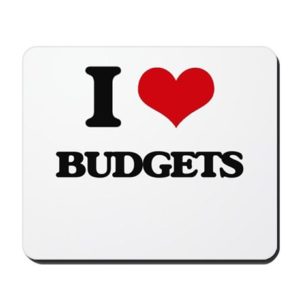 Do you imagine your wallet going on lockdown and your cabinets void of food when you hear the word “budget”? Is it another four-letter word you’ve trained yourself to avoid using when it comes to your finances?
Do you imagine your wallet going on lockdown and your cabinets void of food when you hear the word “budget”? Is it another four-letter word you’ve trained yourself to avoid using when it comes to your finances?It’s been said if you change the way you look at things, the things you look at change. So let’s redefine the word, give it a positive spin and begin walking the path of victory toward your financial goals. According to the Fidelity 2016 New Year Financial Resolutions Study, more thanone-third of Americans will make financial resolutions at the start of the new year. Fifty-four percent (54%) of the people vow to save more money; 19%resolve to spend less money; 16% promise to pay off existing debt; and only10% of those making financial resolutions are planning to make and stick to a budget.
In Step 1 you get to start dreaming again. You get to ask yourself what you want your money to do for you – your Why.
Do you need to redo that outdated bathroom you’ve been turning a blind eye to the last five years?
Is it time for you to buy a house?
Would you like to retire and be certain you’re financially secure before you do?
Or are you just looking to have more check at the end of your month than more month at the end of your check?
Whatever your Why, budgeting with your goals in mind is a healthy, positive way to help make your dreams your reality.
Step 2: Identify Your Where
Knowing where your money goes is a key step to financial freedom for many reasons, most specifically so you can plug up any spending holes such as that extra $35 a week ($140 a month) coffee habit as well as being able to set realistic monthly targets in each area of your spending. For example, if you budget $300 for gas but find you’re spending closer to $400 a month, knowing this will help you more easily balance the budget and maybe even encourage you to start drinking that morning coffee at home.
After you’ve tracked where your dollars are actually being spent, the next step is to write it all down, bring it all together and decide exactly how your money is going to start working for you.


Comments (2)
6 Easy Ways to Make Extra Cash…This Week! – Financial Services / July 16, 2019
[…] to withdraw enough money to cover your expenses for the week. (If you’re not already on a budget, here’s a great resource for you to get started with one today!) The discipline of paying with only cash will boost your […]
Is Eating Out Costing You More than just Money? – Financial Services / July 16, 2019
[…] you know how much you actually spend on eating out, revisit your budget to see whether or not that number falls within the guidelines you set for yourself and your […]